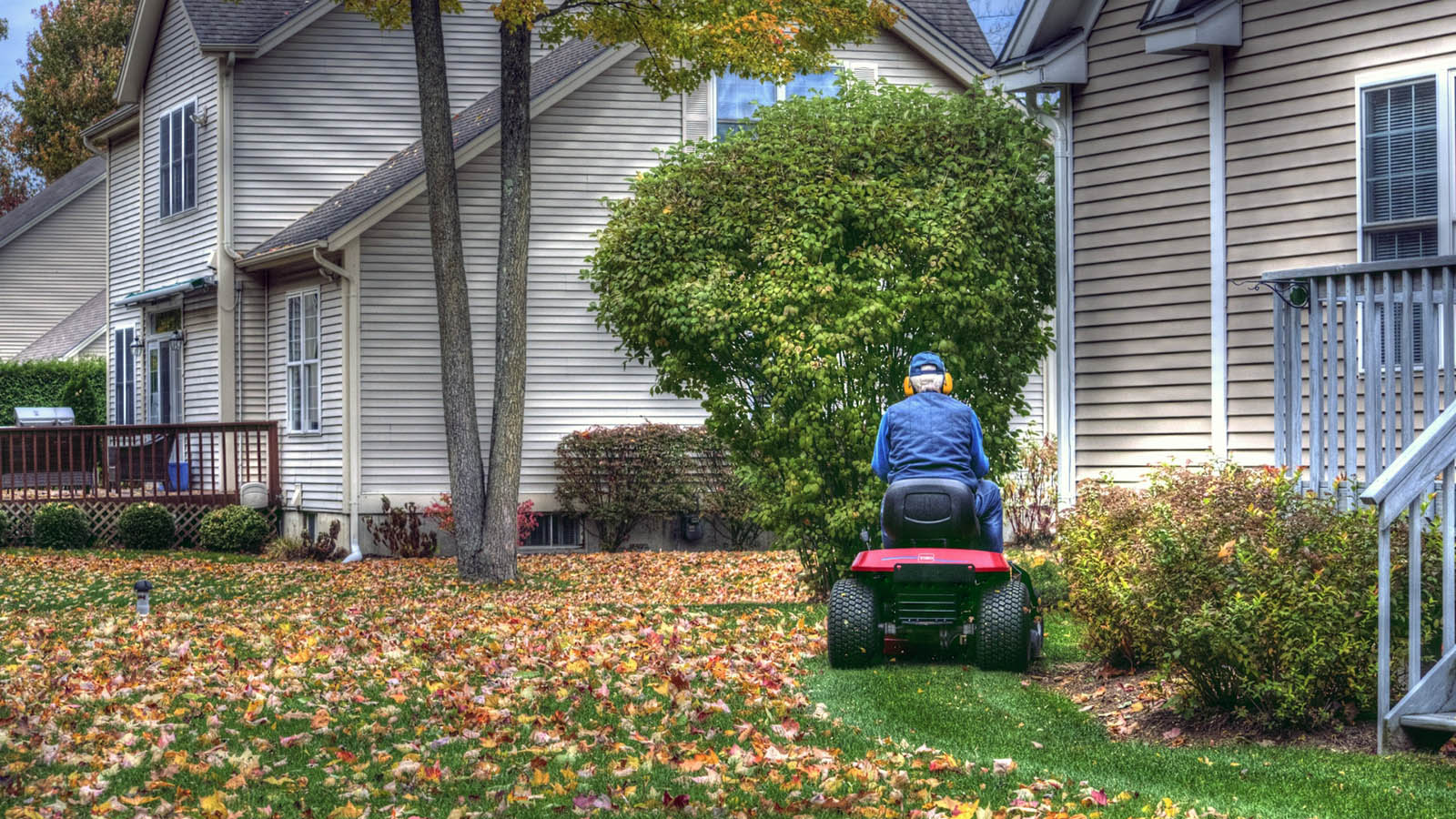You may have noticed that your grass looks a little yellow and patchy in areas with trees. You may wonder if the trees’ leaves are killing the grass. The answer is yes; they can be. Here’s a closer look at how long it takes for leaves to kill grass and what you can do about it.
Table of Contents
How long does it take for leaves to kill grass?
Leaves can kill grass if they prevent the soil and roots from absorbing nutrients, water, or sunlight. The general rule is that you shouldn’t let leaves sit on the grass for more than three or four days.
However, you might have to adjust that depending on the type of leaves and their thickness. If you choose to leave fallen leaves on your lawn, remember that there are some places they don’t belong. They can clog storm drains and should be disposed of properly.
Excessive leaf matter on your lawn as winter approaches is undesirable for several reasons. It will first smother the grass and, if not removed quickly in the spring, will inhibit growth. Second, it has the potential to spread snow mold diseases. Finally, critter damage to turf (voles, mice) can be more extensive in the spring.

Will leaving fallen leaves to kill grass?
Under dry conditions, fallen leaves can kill your grass if they prevent the soil and roots from absorbing nutrients, water, or sunlight. Leaves will decompose, but if you leave them on your lawn and they begin to pile up, they can do more harm than good. That’s because the decomposing leaves release chemicals that can damage or kill the grass.
Top-rated lawn pros tell our researchers that leaves left to pile up can form a heavy mass that can kill or damage grass and other plants. If you choose to leave fallen leaves on your lawn, remember that there are some places they don’t belong. They can clog storm drains and cause flooding.
And while it is at least partially true that excessive amounts of fallen leaves can smother areas of a lawn when they’re left in thick piles all winter, mulched leaves are good
The time it takes for leaves to kill the grass

It’s true that lawns go dormant in the winter, and the decomposing leaves won’t cause harm during that time. However, when spring comes around, most lawns come out of dormancy, and the leaves can impede new growth. If you still think that a leaf-covered lawn looks cluttered or messy, or you live in a community that requires you to keep your yard leaf-free, it’s best to rake them up and compost them.
Will grass grow back after it leaves?
If the grass has only been dead for a short period, it is possible to revive it. This is because the roots of most plants are still alive and can regrow. To revive the grass, remove the leaves blocking sunlight and preventing moisture from evaporating. You may also need to water the grass seed in the morning and avoid walking on new growth.
Your lawn has entered dormancy, a protective strategy that stops leaf growth to keep its underground roots healthy. When the rains come, it could take two to three weeks for your grass to start growing and greening up again.
How to get rid of leaves without raking

Environmental experts say raking leaves and removing them from your property is bad for your lawn and the planet.
If you grew up in a neighborhood with lots of trees, chances are you had to put in plenty of hours each fall raking them all together, bagging them up, and
If the leaves aren’t removed, the grass can die, and in the spring, the lawn may have bare patches that require reseeding or resodding.

Is it better to rake or leave the leaves on grass?
Allow leaves to fall where they may. They will not harm your lawn if you use a mulching mower to cut them. Rake the lawn to collect leaves for use as mulch in garden beds. Shred them first for finer-textured mulch.
How long does it take for leaves to break down in a compost pile?
It can take months to a year for leaves to break down and become compost. The time frame depends on the type of leaves and the compost pile conditions. A pile of unshredded leaves with no nitrogen sources may sit for years before decomposing completely.
In Conclusion
Here’s the deal. By removing the leaves year after year, you are truly removing vital nutrients from your lawn. Most people don’t know this.
When leaves are left on the grass for too long, it blocks the sun, and your grass will start to stress. Fall is the best time of the year for the grass.
If a deep cold snap triggers leaf drop that happens quickly over a few days, you can wait until the lawn is nearly covered.

